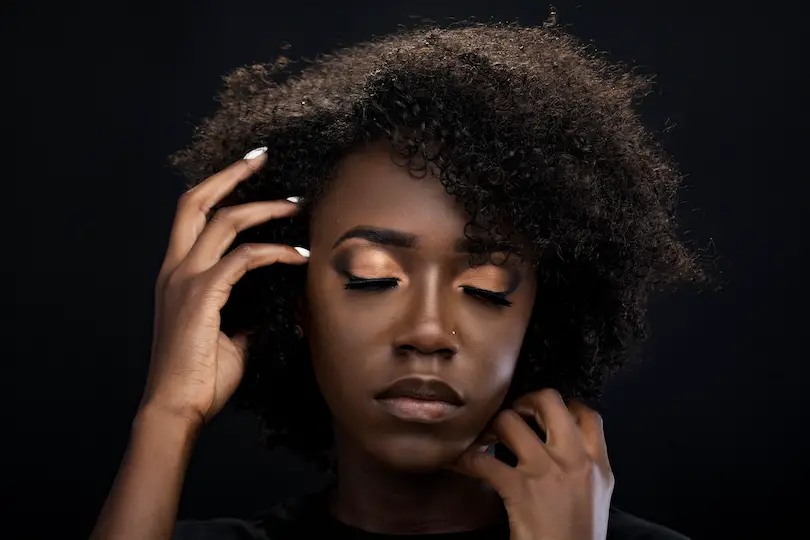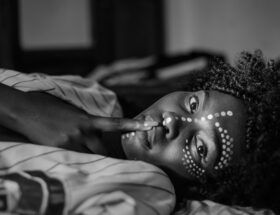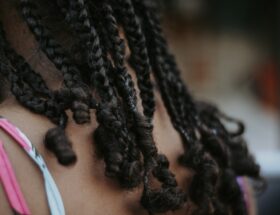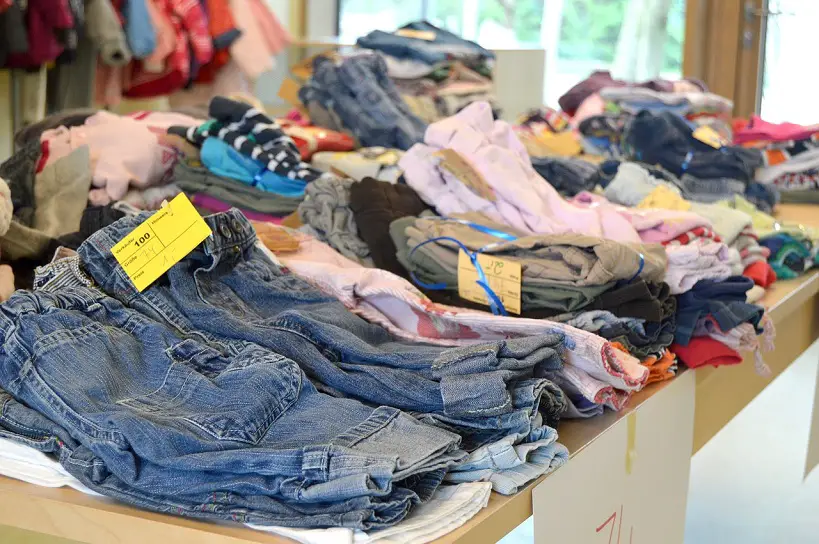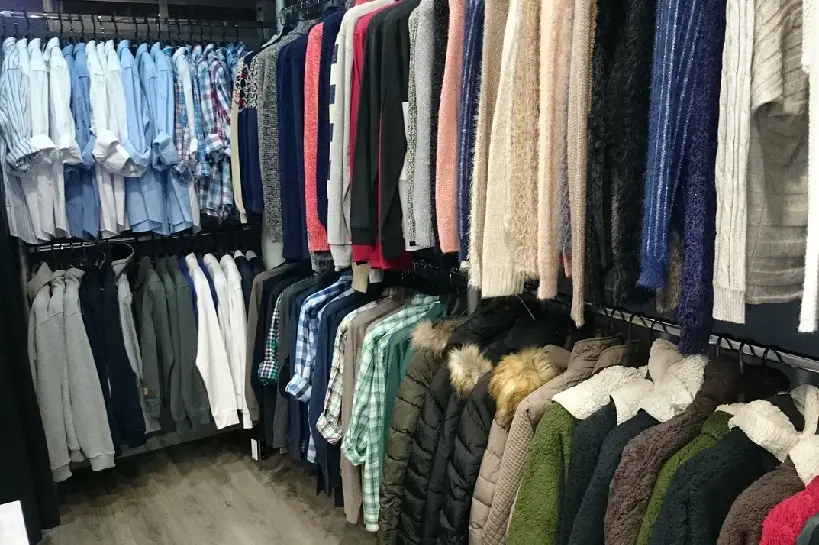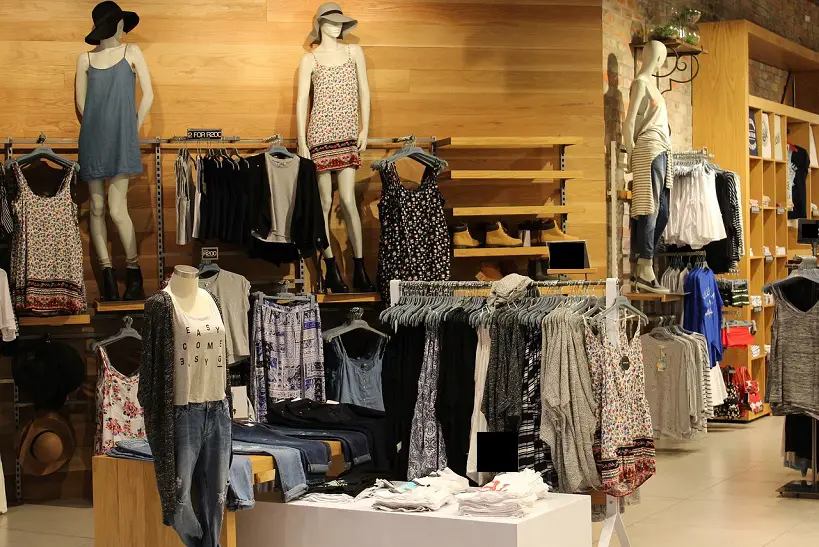The braiding method determines the hair to use for butterfly locs.
Many natural hair lovers use FreeTress or Dorsanee Water Wave for the braid and wrap method and pre-stretched braids like Toyotress, Niseyo, and Lulutress crochet hair from Sensationnel when crocheting.
What Are Butterfly Locs?
This boho style was wavy, textured loops.
Its pattern is somewhere between faux locs and passion twists. Hence, it’s not as curly as passion twists or as tight as faux locs. Instead, butterfly locs have curly loops that display a textured, wavy pattern. On top of that, most butterfly locs hairstyles are shoulder-length, unlike passion twists that can be waist-length or longer.
It’s a trouble-free hair DIY, where you crochet wavy braids into the root of natural hair, then wrap the braid over your thumb severally to get a distressed loop. The fluffier the butterfly locs, the more loops they have.
There are numerous brands to choose from when buying braids for butterfly locs. Therefore, there’s no limit to how creative you can get with this protective style. They can be long or short butterfly locs, thin or thick ones, and there’s an exciting array of braid colors in the market.
Most people use between five and a half to eight packs. It depends on your natural hair mass, length, and style you hope to achieve.
A hair stylist can charge between $150 and $300. The cost varies across states. It also depends on loc length and style. That’s a reasonable price, given you’ll wear this protective style for several months. Fortunately, this style is an uncomplicated process you can DIY. Here’s how to do it.
Tips on How To Install Butterfly Locs at Home
There are two ways of installing butterfly locs: braid and wrap or crochet methods.
1. How to Braid and Wrap
As the name suggests, when you braid and wrap, you first braid your natural hair, then wrap it with the extension. Therefore, you should know how to make neat natural hair braids. If you have thin hair, make it thick by braiding it with filer braids like Marley braids. Hence, you’ll have thick butterfly locs when you wrap the Marley braids.
This method also requires crocheting to attach the braid at the root of your natural hair. Pull the braid through your natural hair using a crochet hook, leaving one shorter side. Hold the shorter side and natural hair in one hand, and wrap the longer braid around your root about six times.
To make the loops, wrap the braid over your thumb to give them a wavy texture different from passion twists. Long butterfly locs should be thin to reduce the tension at the root of your natural hair. Therefore, braid up to 50 locs.
Here’s a straightforward visual presentation of the process.
2. How to Crochet Premade Locs
Using premade hair is less stressful than buying braids you have to prep from scratch.
First, braid your natural hair in neat cornrows, then use the crochet hook to pass the braid through your hair.
Here’s a quick tutorial.
How Do You Prepare Your Hair for Butterfly Locs?
To protect your natural hair, you want to braid clean hair. Therefore, shampoo and deep condition your hair to keep it healthy and moisturized. There’s also a bit of hair care required after installation to keep your natural hair hydrated.
Conclusion
You can get butterfly locs irrespective of your hair length. If your natural hair is short, your hair stylist will use a filler braid like Marley hair braids, then wrap. This protective style is an excellent choice when you want to grow your edges, as butterfly locs last up to six weeks.

